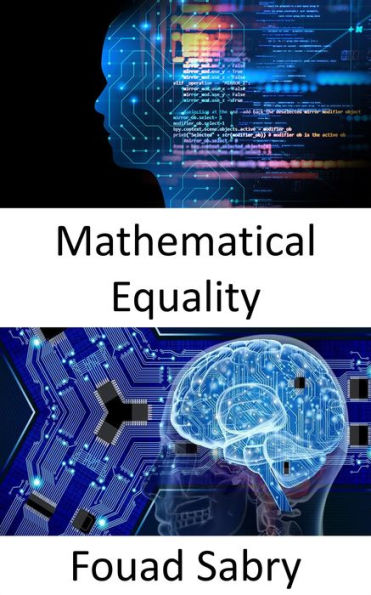What Is Mathematical Equality
In the field of mathematics, equality refers to a relationship that exists between two numbers or, more generally speaking, two mathematical expressions. This relationship asserts that the quantities share the same value or that the expressions reflect the same mathematical object. The statement that A and B are equal can be written as "A equals B" and spoken as "A is equal to B." An "equals sign" is the name given to the symbol "=". Two things are considered to be separate if they cannot be compared to one another.
How You Will Benefit
(I) Insights, and validations about the following topics:
Chapter 1: Equality (mathematics)
Chapter 2: Equivalence relation
Chapter 3: Equivalence class
Chapter 4: First-order logic
Chapter 5: Groupoid
Chapter 6: Isomorphism
Chapter 7: Peano axioms
Chapter 8: Algebraic structure
Chapter 9: Reflexive relation
Chapter 10: Transitive relation
(II) Answering the public top questions about mathematical equality.
(III) Real world examples for the usage of mathematical equality in many fields.
(IV) 17 appendices to explain, briefly, 266 emerging technologies in each industry to have 360-degree full understanding of mathematical equality' technologies.
Who This Book Is For
Professionals, undergraduate and graduate students, enthusiasts, hobbyists, and those who want to go beyond basic knowledge or information for any kind of mathematical equality.
What Is Mathematical Equality
In the field of mathematics, equality refers to a relationship that exists between two numbers or, more generally speaking, two mathematical expressions. This relationship asserts that the quantities share the same value or that the expressions reflect the same mathematical object. The statement that A and B are equal can be written as "A equals B" and spoken as "A is equal to B." An "equals sign" is the name given to the symbol "=". Two things are considered to be separate if they cannot be compared to one another.
How You Will Benefit
(I) Insights, and validations about the following topics:
Chapter 1: Equality (mathematics)
Chapter 2: Equivalence relation
Chapter 3: Equivalence class
Chapter 4: First-order logic
Chapter 5: Groupoid
Chapter 6: Isomorphism
Chapter 7: Peano axioms
Chapter 8: Algebraic structure
Chapter 9: Reflexive relation
Chapter 10: Transitive relation
(II) Answering the public top questions about mathematical equality.
(III) Real world examples for the usage of mathematical equality in many fields.
(IV) 17 appendices to explain, briefly, 266 emerging technologies in each industry to have 360-degree full understanding of mathematical equality' technologies.
Who This Book Is For
Professionals, undergraduate and graduate students, enthusiasts, hobbyists, and those who want to go beyond basic knowledge or information for any kind of mathematical equality.

Mathematical Equality: Fundamentals and Applications
158
Mathematical Equality: Fundamentals and Applications
158
Product Details
| BN ID: | 2940167597730 |
|---|---|
| Publisher: | One Billion Knowledgeable |
| Publication date: | 06/25/2023 |
| Series: | Artificial Intelligence , #48 |
| Sold by: | PUBLISHDRIVE KFT |
| Format: | eBook |
| Pages: | 158 |
| File size: | 2 MB |
